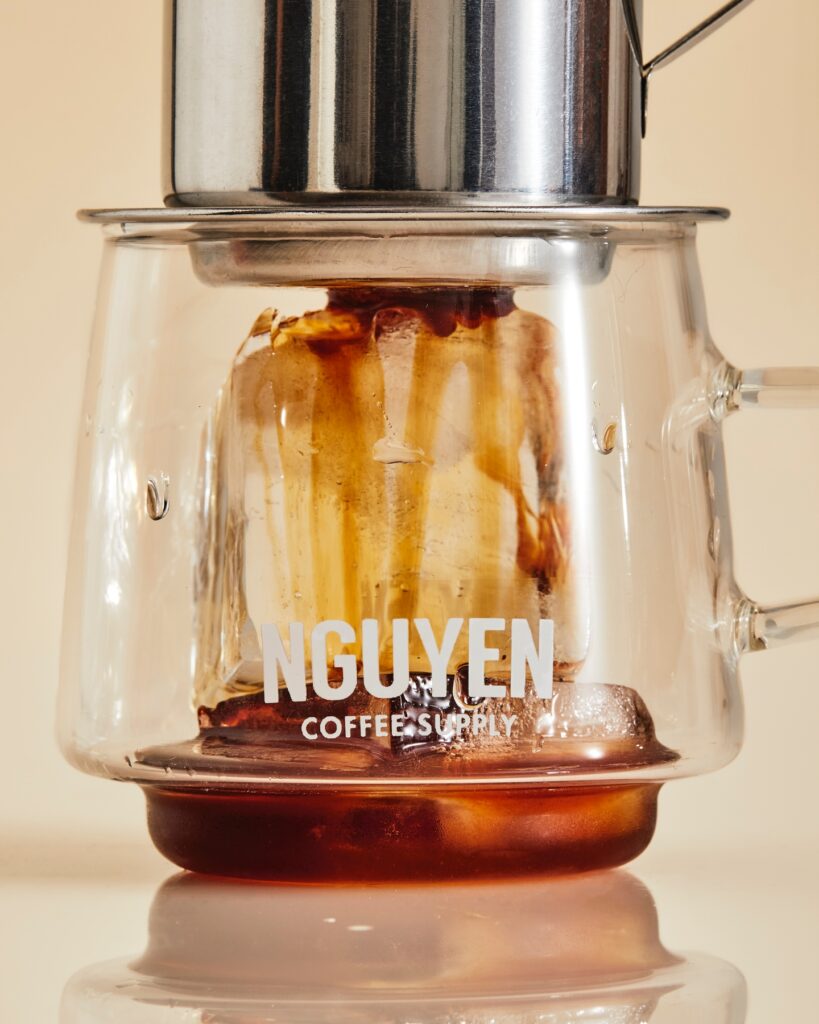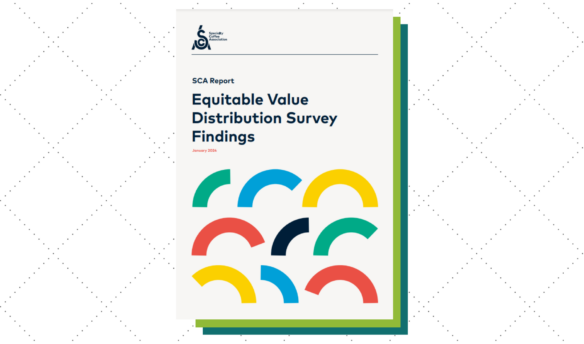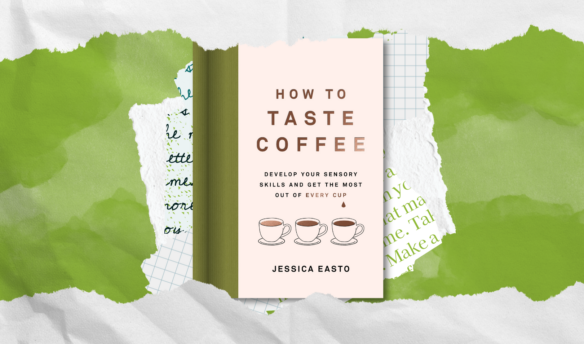If you type in the word coffee on your phone, an emoji for a mug comes up. But what if, instead, the emoji for coffee was a tumbler of cold brew? That future might not be too far away.
In 2020, Starbucks reported that cold drink sales had increased almost 50% over the last four years. In 2021, the brand shared that 74% of all drinks sold were cold—year round. Instead of a classic hot coffee, cold beverages are dominating cafe menus around the globe.
Like everything else, the coffee industry evolves as its consumers do. The last few years have seen a shift in the style of coffee consumed as Gen Z, a generational cohort whose oldest members are in their early to mid-20s, has aged into coffee drinking. But how exactly has Gen Z influenced the coffee industry? Take a look at Chamberlain Coffee.
With its famous founder, accessible approach to coffee, and engagement with trends like recipe customization, Chamberlain Coffee speaks to the shift Gen Z is bringing to the coffee industry.
We caught up with coffee expert and CEO of Nguyen Coffee Supply, Sahra Nguyen, to weigh in on young people’s impact on the coffee industry and how Gen Z’s preference for cold drinks isn’t the only way this cohort is shaping the future of coffee.
Who’s Behind The Brand?
Chamberlain Coffee was founded in 2019 by 21-year-old YouTuber Emma Chamberlain. She started the brand in fulfillment of a childhood dream, telling Hollywood Life: “Ever since I started drinking coffee and started going to cafes as kind of an escape for me, this was a dream of mine. I’ve always wanted to do something with coffee, whether that be a barista or this, which is ten times cooler for me.”
Though not the first YouTuber to launch a coffee company (hello, Hank and John Green!), with 11.6 million YouTube subscribers, more than one Met Gala appearance, and a podcast that ranks in the Top 15 on Spotify, she’s undoubtedly the most well known. Chamberlain is recognized for a vlogging style that showcases her everyday life, which includes a lot of coffee. The YouTuber often records herself drinking cold brew in her home or making drinks with her espresso machine.
Part of Chamberlain’s success comes from being able to connect with her viewers in a way that feels authentic. Chamberlain is funny and irreverent, often making faces and off-hand comments that feel genuine, which helps build connection and credibility to her coffee brand.
On young people’s priorities while choosing a product, Nguyen says, “I feel like a lot of consumers care about the founder and the values behind the company.” The Chamberlain coffee brand feels like an extension of her YouTube personality that viewers are already familiar with.
Chamberlain Coffee re-branded in 2020 with a more expansive product line. From a quick look at Chamberlain Coffee’s website, it’s clear that the company emphasizes cold drinks just as much as it does hot. From mason jars of various sizes to specially designed cold brew bags to a French press made solely for cold brew, Chamberlain Coffee knows that some like it hot—and some cold.
Chamberlain Coffee’s emphasis on cold drinks is evidence of a broader shift towards cold coffee. In June of 2021, when Starbucks announced cold drinks were outpacing the sale of hot beverages by three to one, a 10% increase from the year before, then Starbucks CEO Kevin Johnson told Yahoo News: “I tell ya—customers love them, and especially the millennial and the Gen Z cohorts, they really enjoy those cold beverages.”
Bringing Approachability to Coffee
Chamberlain Coffee has positioned itself as “coffee without the pretentiousness.” In an era where many coffee brands have embraced muted colors and minimalist design, Chamberlain Coffee uses bright colors on its packaging, engaging copy, and out-of-the-box drink recipe suggestions—reflecting many design trends that brands popular with Gen Z consumers are implementing.
It starts with how Chamberlain Coffee describes its product. Traditional coffee companies use copy that focuses on the coffee beans and roast profile rather than the consumer. Chamberlain Coffee breaks the mold in this regard, and its packaging uses phrasing like, “Scientifically proven to make you more productive, or whatever,” product copy that is relatable to the consumer and has nothing to do with the product itself.
Chamberlain Coffee isn’t didactic about how people enjoy their coffee, offering single-serve and instant options for consumers. “There’s definitely a group of people that prefer whole beans, but there’s also a large audience out there that prefers convenience and creativity,” says Nguyen.”
On Chamberlain Coffee’s site, there are tutorials for coffee drinks, including a Pumpkin Spiced Latte, Chamberlain Iced Coconut Latte, Cold Brew Milkshake, and more—things you don’t often see on more traditional coffee websites. “I think if you research some of the older specialty coffee companies, they focus more on extraction science and mastery. There’s plenty of brew guides on their websites about how to extract coffee, but no drink recipes.” There are also suggestions for preparing drinks, such as trying the Cocoa Grizzly Hot Chocolate iced instead of hot.
Nguyen is familiar with eschewing traditional coffee strategies. Nguyen Coffee Supply is on a mission to “bring diversity and inclusion to coffee culture,” and the company is known for using social media to engage and build its audience. Like Chamberlain Coffee, Nguyen Coffee Supply uses coffee recipes to help “deconstruct elitist coffee culture,” according to Nguyen, because it allows consumers to drink coffee however they want.
Nguyen Coffee Supply publishes a new drink recipe each week, such as an Apple Pie Latte, Coffee Overnight Oats, and more, because the company “really loves bringing creativity to the coffee experience,” said Nguyen. “I think this explosion of fun drink recipes has been really engaging for Gen Z because it’s more fun, it’s more diverse, it’s more interesting… it really broadens the palette for how coffee can taste,” Nguyen said, calling out drink recipes that have gone viral on TikTok.
Speaking of TikTok, it’s impossible to ignore the massive influence the social media platform has had on how people drink coffee. BuzzFeed News Reporter Katie Notopoulos wrote about the impact of TikTok in their article, “The Rise of the Appuccino.” In the piece, Notopolous surmises that the increase of app-based ordering during the pandemic, coupled with more time spent at home (meaning online), created the perfect storm for complex drink recipes to go viral, most of which are cold.
As a result, the hashtag “#coffeerecipe” on TikTok has over 201 million views, and influencers continue to gain online popularity. Dunkin’ Donuts has legitimized the connection between TikTok and coffee with the creation of a drink called “The Charli,” a collaboration between the chain and TikTok star Charli D’Amelio.
At the same time, coffee brands are racing to capitalize on the growing power of celebrity status to market their drinks. For example, Starbucks has created “Taylor’s Latte,” after singer Taylor Swift (a grande caramel nonfat latte), while Tim Hortons has teamed up with Justin Bieber to offer “Biebs Brew,” a French vanilla-flavored cold brew.
The Future Is Cold (And Sustainable)
According to the company’s website, Chamberlain Coffee products are organic, sustainably sourced, and responsibly packaged. Chamberlain Coffee describes itself as “coffee with a conscience” and claims that they “only deal[s] with sustainable coffee suppliers and seek[s] partnerships that make [its] products greener and greater.”
Although some may view sustainability as a bonus, three-quarters of Gen Z consumers value sustainability over brand names, demonstrating that sustainability is no longer a “nice to have.” For comparison, 65% of baby boomers rated sustainability as an essential part of their purchase.
Nguyen agrees: “We’re at a point right now where sustainability should already naturally be integral to a company’s mission.”
Companies like Chamberlain Coffee are acknowledging and embracing the needs of younger coffee drinkers. Utilizing her platform on YouTube, Chamberlain has curated an elegant yet casual vibe surrounding her experience of drinking coffee, making it easy for customers to picture themselves doing the same.
Chamberlain Coffee reflects Gen Z’s priorities in the ever-changing coffee space. Instead of minimalist coffee bags that feature exacting recipes for extracting the perfect cup of black coffee, brands like Chamberlain Coffee emphasize coffee’s playful side, providing drinkers with colorful and aesthetically pleasing products and exciting drink recipes.
Brands like Chamberlain Coffee are not simply responding to trends but echo how consumers drink coffee today and can serve as a blueprint for brands looking to stay relevant and engage with coffee’s younger audience.
Cover photo by Blake Wisz
Sasha Weilbaker is a freelance writer living and working in Vermont. In the wild, she can be found at her local coffee shop or on her bike.
















